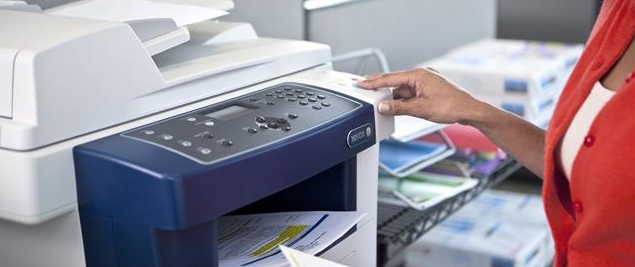 Note: This article was filed by a paid contributor to Xerox Corporation.
Note: This article was filed by a paid contributor to Xerox Corporation.
The modern workplace looks much different from its counterparts a decade or so ago. Now, minimalist layouts and less cumbersome workspaces rule the roost. However, just because there are more efficient ways to run a business with less reliance on hardware and office equipment does not mean companies can 100% run without them.
Whether your office is in need of a major makeover, update or you are just getting started, there are certain essentials you need to surround yourself with to make your workplace and operations run smoothly, productively, and comfortably. Let’s take a look at five pieces of office equipment we think that every small business needs.
5 Pieces of Office Equipment Every Workplace Needs
Although most of the work may businesses do these days takes place online—through your website, email, chat — that does not mean your physical business does not need a proper setup, too.
In fact, if you are looking to build a solid business foundation from which your company can run, you should have all of the essentials in place. That way, you can focus on managing your business and not on waiting for a wi-fi connection to pop up or continually calling someone in to repair your malfunctioning and outdated equipment.
Here are the five pieces of equipment every small business should invest in:
- Internet Connectivity Equipment
Your business needs always-on, dependable internet access. This is why every business must have the essential equipment to ensure this: a modem, a router and ethernet cable. Internet service providers typically provide a modem upon installation. They may also provide a modem/router combination, but most connectivity experts will tell you to avoid using these as they are just not powerful or efficient enough for a business’s needs. So, a router will need to be purchased separately to ensure you have a reliable, secure, and strong Internet connection for all your local devices. And, of course, you will need ethernet cables to ensure all your Ethernet-enabled devices can be connected.
- VoIP Phone System
Due to costs, many small businesses these days are ditching the traditional PBX phone system and going with a VoIP (Voice Over IP) system instead. Typically, VoIP customers can receive all the hardware (phones and cabling) as well as the Internet-connected phone service from their provider, so it is easy to get up and running.
- Smartphone or Tablet
Some businesses still frown upon the use of smartphones or tablets in the workplace as they can often be seen as an unnecessary distraction as well as a potential security risk. However, with the proper security measures and office rules in place, these devices can become a convenient device while working in the field, especially if it is set up to enhance communication and collaboration with things like mobile printing capabilities, and chat functionality.
- Computer
No matter how convenient smartphones or tablets have made it for people to work while on the go (or even when briefly stepping away from their desk), a computer will always be essential. The only difference nowadays, however, is that laptop computers are often viewed as the computing device of choice because of their portability and the minimal real estate they consume.
- Muti-Function Printer
Of course, every small business will need to have a high-powered multifunction printer (MFP) in place. In today’s modern workplace, however, an MFP alone isn’t always enough. What many small businesses need instead is a true workplace assistant that goes beyond the traditional copy, scan, and fax functionality.
.
Xerox recently introduced two new series of MFPs—Xerox VersaLink® and Xerox AltaLink®. For those of you with a smaller print volume, the VersaLink is the ideal solution. It includes features like:- Built-in apps to create streamlined workflows
- An intuitive interface
- Mobile and cloud readiness
- ConnectKey security
Best Practices for Setting up Your Workspace
Just remember that getting the equipment is just the beginning. You should also maintain best practices when setting up your workspace, too, including:
- Providing access to natural light for all team members.
- Abiding by universally friendly office temperatures.
- Investing in ergonomic office chairs and sturdy desks (sitting or standing).
- Always having bountiful office supplies available, including paper, ink, and stationery.
- Encouraging employees to personalize their workspace.
So, there you have it: the five essential pieces of office equipment every small business needs to power their modern workplace and the best practices to abide by when setting it all up.
Share this article on Twitter!
Tweet:Tweet: 5 Essential Pieces of Office Equipment Every Small Business Needs https://ctt.ec/c3cHv+ via @XeroxOffice
Subscribe to the Small Business Solutions Blog and receive updates when we publish a new article. [wysija_form id=”1″]




Thank you for sharing this wonderful blog. Please click the website: http://www.jtfbus.com/
Thanks for sharing your knowledge with us. here are
office equipment suppliers that supplies quality product.